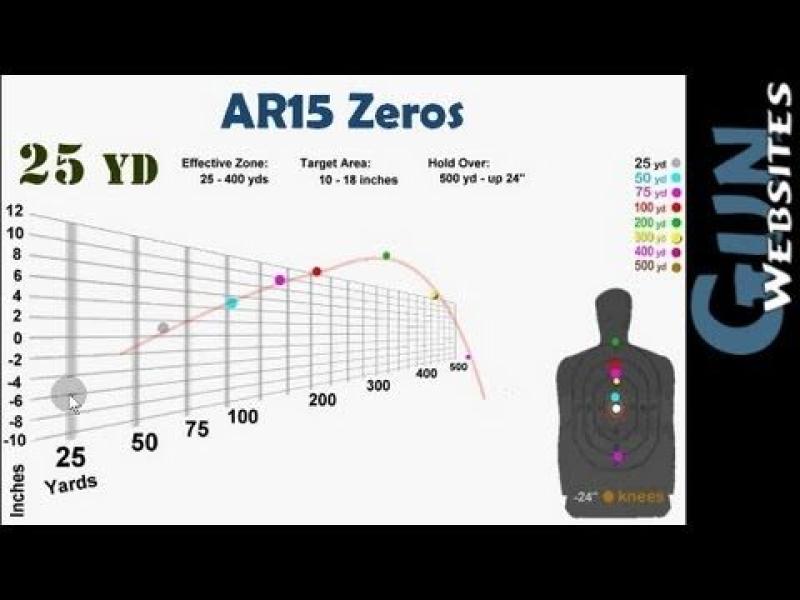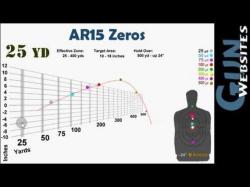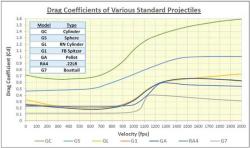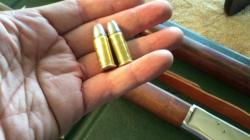How to quickly calculate bullet drop?
Calculating bullet drop involves estimating the vertical distance that a bullet will fall below the line of sight as it travels downrange. The calculation takes into account factors such as the bullet's initial velocity, the time of flight, and the gravitational acceleration. While there are ballistic calculators and software available for precise calculations, a simplified method known as the "Bullet Drop Formula" can provide a quick estimate.
The Bullet Drop Formula is:
where:
- Bullet Drop is the vertical distance the bullet will drop (in inches or meters),
- is the gravitational acceleration (approximately 9.8 m/s²),
- is the time of flight (in seconds).
Here's a step-by-step guide on how to quickly calculate bullet drop:
1. Gather Information:
- Bullet Velocity ():
- The initial velocity of the bullet in feet per second (fps) or meters per second (m/s).
- Bullet Drop Distance (in Yards or Meters):
- The distance at which you want to estimate the bullet drop.
2. Calculate Time of Flight ():
- The time of flight can be estimated using the formula .
3. Plug Values into the Formula:
- Use the Bullet Drop Formula .
- is approximately 9.8 m/s².
4. Perform the Calculation:
- Square the time of flight (), multiply it by half of the gravitational acceleration (), and you'll have the estimated bullet drop.
Example Calculation:
- Bullet Velocity (): 3000 feet per second
- Bullet Drop Distance: 300 yards
- Calculate Time of Flight ():
- = 0.1 seconds
- Bullet Drop:
- ≈ 0.05 meters (or convert to inches as needed).
This method provides a quick and simple estimate of bullet drop. For more accurate calculations, especially at longer distances or for specific bullet trajectories, consider using ballistic calculators or software designed for more comprehensive ballistics analysis.
Sure, here are some techniques for quickly calculating bullet drop:
1. Techniques for quickly calculating bullet drop:
There are a few techniques that can be used to quickly calculate bullet drop. These techniques are not as accurate as using a ballistic table or a rangefinder, but they can be useful in a pinch.
Kentucky windage: Kentucky windage is a method of estimating bullet drop by using the distance to the target and the height of the sight above the bore. This method is not very precise, but it can be used to make rough estimates of bullet drop.
Point-blank range: The point-blank range is the distance at which the bullet will hit the target without adjusting your sights. This is a useful concept for close-range shots, but it is not accurate for longer ranges.
Bullet drop charts: There are bullet drop charts available for many popular bullet types. These charts show the expected bullet drop at different ranges. This can be a quick way to estimate bullet drop if you have the chart handy.
2. How to expedite the calculation of bullet drop:
Here are some tips for expediting the calculation of bullet drop:
Use a rangefinder: A rangefinder is a device that measures the distance to a target. This can be helpful for quickly estimating bullet drop, as you can use the distance to look up the expected bullet drop in a bullet drop chart or use the Kentucky windage method.
Use a ballistic calculator: There are ballistic calculators available online and as apps for smartphones and tablets. These calculators can take into account various factors, such as bullet type, velocity, and atmospheric conditions, to give you a more accurate estimate of bullet drop.
Practice with your firearm: The best way to get a feel for bullet drop is to practice with your firearm at different ranges. This will help you to develop a sense of how much bullet drop to expect at different distances.
Are there shortcuts or methods for rapid bullet drop estimation?
Yes, there are a few shortcuts and methods for rapid bullet drop estimation. These methods are not as accurate as using a ballistic table or a rangefinder, but they can be useful in a pinch.
The Kentucky windage method is one example of a shortcut for estimating bullet drop. This method involves using the distance to the target and the height of the sight above the bore to estimate the amount of bullet drop. While not as precise as other methods, it can provide a rough estimate in situations where time is of the essence.
Another shortcut is to use point-blank range. The point-blank range is the distance at which the bullet will hit the target without adjusting your sights. This is a useful concept for close-range shots, but it is not accurate for longer ranges.
Finally, bullet drop charts can be used to quickly estimate bullet drop. These charts show the expected bullet drop at different ranges for a particular bullet type. Bullet drop charts can be found online or in reloading manuals.
It is important to note that these shortcuts and methods are not as accurate as using a ballistic table or a rangefinder. If you need a precise estimate of bullet drop, it is always best to use one of these more accurate methods.












